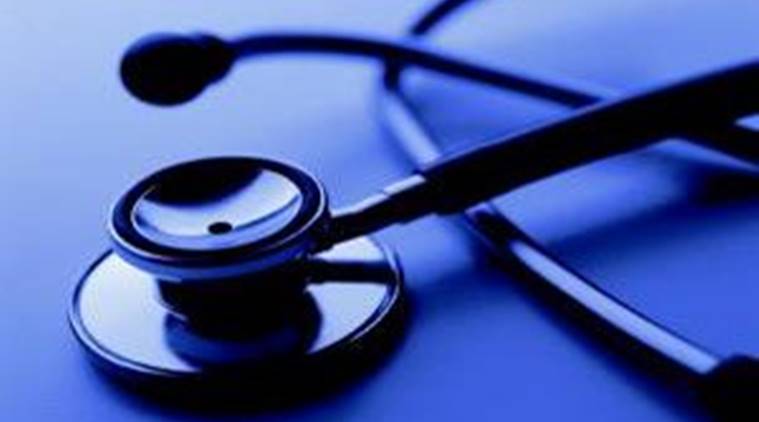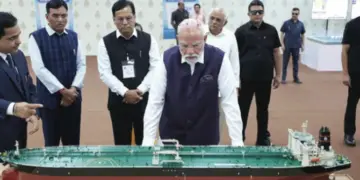A patient coming to a clinician is never satisfied unless he or she is examined by putting the stethoscope on the chest and back and asked to breathe in and out. This routine although not so useful except in florid cases of fluid in the chest or loud murmurs of the heart can miss many clinically relevant information’s. But then how did this stethoscope become a part of the doctor’s armamentarium over the centuries?
The year was 1816 in Paris, and Dr. René Laennec a Paris born physician in 1816 was presented with a challenging case. His patient, a young woman, was suffering with symptoms suggesting heart disease. She was an obese lady and the doctor found it difficult for to perform a direct auscultation. This used to be the practice of placing ears directly on the chest. In an era where such close physical contact was considered improper, Laennec was in a state of professional embarrassment.
Then as a stroke of genius he recalled seeing two children playing with a long, hollow piece of wood. One child would scratch one end with a pin, and the other, with his ear pressed to the opposite end, could hear the sound surprisingly amplified. Laennec’s got a bright idea. He rolled up a sheet of paper and applied one end to the patient’s chest and the other to his ear. To his surprise, he could hear the heartbeat much more clearly and distinctly than before. This discovery led him to immediately recognize the potential of this method for studying not only the heart but also other chest The sound was not only audible but amplified, revealing a new world of diagnostic information.
He thus had created the first stethoscope, a simple wooden tube he named the “cylinder,” derived from the Greek words stethos (chest) and skopein (to view). His invention, born of necessity and inspired by a child’s game, was a monumental leap forward, transforming auscultation from an awkward and often unreliable practice into a precise, scientific tool.
From Wood to Wireless
Laennec’s initial wooden tube was just the beginning. The stethoscope’s evolution mirrors the history of medicine itself. For decades, doctors used the monaural wooden cylinder. It wasn’t until 1851 that the first binaural ( two ear pieces )stethoscope was invented by Arthur Leared, allowing a doctor to listen with both ears. This design was further refined in 1852 by George Cammann, whose flexible rubber tubing and two earpieces laid the foundation for the classic stethoscope we know today.
In the 20th century, engineers continued to improve the design. In the 1960s, Dr. David Littmann revolutionized the device again with a lighter model that offered vastly improved acoustics. His design became the gold standard and is the basis for the most widely used stethoscopes today.
With the advent of the digital age, the stethoscope has taken on new capabilities. Electronic stethoscopes amplify sounds, cancel out background noise, and can even record and share data. These devices connect to smartphones and computers, allowing doctors to visualize a patient’s heart and lung sounds in real-time, a truly remarkable leap from Laennec’s simple wooden tube.
The Future: A Multimodal Revolution?
The question of whether the stethoscope will be replaced by a multimodal device is a fascinating one. It’s less about replacement and more about evolution and integration. The stethoscope’s core value lies in its simplicity, low cost, and the physical connection it enables between a doctor and patient. However, the future of diagnostics is pointing toward a more comprehensive, data-driven approach.
Multimodal devices, which are still in their early stages of development, are designed to capture a range of physiological signals simultaneously. For example, a single device might be able to measure heart sounds (like a traditional stethoscope), an electrocardiogram (ECG) to monitor the heart’s electrical activity, and a photo-plethysmogram (PPG). PPG is a non-invasive optical technique that measures blood volume and changes in the microvascular bed of the skin. It’s commonly used to assess heart rate, oxygen saturation, and other cardiovascular parameters by detecting variations in light absorption or reflection as blood flows through the tissue, all at the same time. These devices could then use artificial intelligence to analyse the data, detect subtle anomalies that a human ear might miss, and provide an instant, data-rich assessment.
Some prototypes already exist, such as smart stethoscopes that resemble computer mice and connect to a smartphone app to provide multiple data streams. There are even more futuristic concepts, like AI laser cameras that can read a person’s heartbeat from a distance.
While these devices are incredibly powerful and could revolutionize diagnostics, the traditional stethoscope is unlikely to disappear entirely. Its simplicity and reliability make it an indispensable tool in emergencies, in remote settings without advanced technology, or simply for the immediate, hands-on assessment that a doctor performs to build rapport and trust. The stethoscope which the doctor applies to the chest brings in personal bondage and a connect.
Ultimately, the future likely holds a blend of both. The traditional stethoscope will remain a fundamental tool for its simplicity and the human element it provides, while the next generation of doctors will increasingly augment their skills with powerful, multimodal devices that provide a deeper, more analytical understanding of the human body. The stethoscope won’t be replaced; it will be joined by new companions in the diagnostic toolbox.






